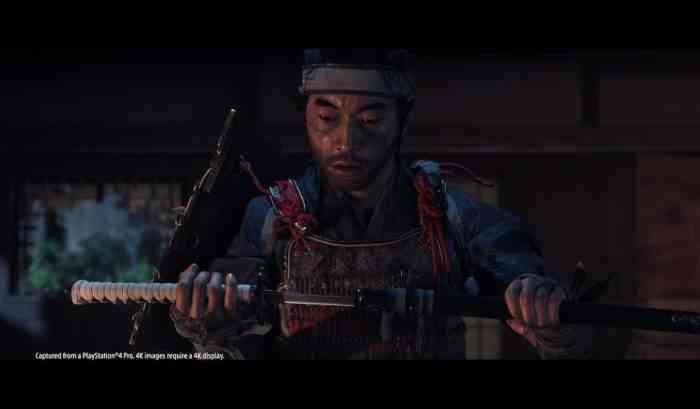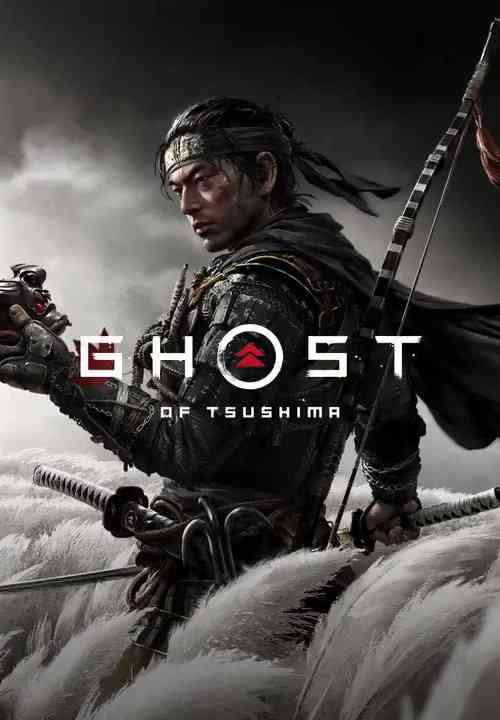Ghost of Tsushima Review
Playing Ghost of Tsushima has been a dizzy dance of expectations versus reality. At so many separate junctions, I’ve slammed into what I wanted to happen, blindsided by the actual events. This game wears the fresh skin of an open world RPG, one crammed full of crafting, karmic choices, and skyrocketing power levels. What I expected, and what I experienced, struggled for weeks to reconcile their differences. So much of this is reminiscent of other titles, different ideas, and similar genres. I’ve been confounded at every turn, and yet I’m enamored all the way. That’s the critical sticking point, you see. My assumptions have been thoroughly subverted, and I’ve loved every minute of it.
Story spoilers for the first Act of the game follow:
Jin Sakai’s tale is also one of unexpected shocks to the system. He ends up being one of the only survivors of a horrific battle against the invading Mongolian army. He’s forced to set aside his code in order to survive. Sneak attacks and subtle arts are not the Samurai way, and yet use them he must. Here is the first of my delusional assumptions laid bare: that I, as Jin, could choose honor over need. With an army on the horizon, one man can’t just charge in and challenge the boss. One man does exactly this, in the opening cutscene. It goes rather poorly. The story goes to great pains to demonstrate, with perfect clarity, that brute force and honor are not going to win this war. I simply failed to see this, at first.
Like A Thief In The Night
Not that there’s only one way to approach each battle. If you’d rather stand outside the gates and demand a deathmatch than sneak in the side, you can do that. As long as there aren’t any hostages to endanger, of course. There are loads of fights that can proceed whichever way you wish, but those major story moments, the ones that change Jin’s whole life? As inevitable as the tides. The lesson being that you can be as bold or as shadowy as you wish, and the narrative will unfold just the same. A part of me expected some sort of karma system, yet I don’t actually begrudge it’s absence. Instead, I’m thankful for the freedom to move through levels however I want. There are some exceptions, though.
Jin’s life is first saved by a thief named Yuna. Unlike Jin, she’s all about sneaking around and flashing knives in the dark. She’ll do whatever she has to in order to survive another day. The first time you stab a man in the back, you’re treated to a flashback, with your uncle driving home the importance of fighting with honor. From then on, these two paths are in constant conflict, with each one presenting different benefits and drawbacks. In addition, Yuna’s missions trend towards stealth. Other characters you run with have the same effect on your stories. An expert archer will find more reasons to shoot people with arrows, or more scenarios where this is the perfect course of action. That’s not the only example of organic design at work, either.

Ghost of Tsushima’s single greatest innovation is in navigation. There is no minimap. Instead, the wind will blow towards your chosen destination. This means that you’re no longer staring at one tiny section of the screen all day, being free to take in every scene from top to bottom. This also makes every section a little more moody, a little more suffused with atmosphere. There’s no area so beautiful it can’t be improved with a lonesome breeze and some well-placed particle effects. Gone are the old days of countless glowing icons cluttering your UI. Simply follow the wind! I can’t overstate how much this changes the way you travel. Plus, every time you choose a new destination, a massive gust blows through the area. It’s both beautiful and practical. Even the sidequests are more streamlined and sleek.
Here’s where things get slightly contentious. Side missions and activities are always some blend of exploration, investigation, and combat. This means that knocking off several in one sitting is a snap. This also means the emotional impact of certain quests is softened. Seeing a hapless peasant learn the grim fate of their family is less overwhelming the sixth or seventh time around. The main narrative has some sharp fangs when it comes to story beats. This just doesn’t always come through in the side content. I found myself smashing through some of these missions with little feeling, but at least doing so was well-paced and rather convenient. You know what never gets old, though? The combat.
You can’t do a proper old-school Samurai epic without some amazing sword fights, and Ghost of Tsushima has these in spades. Every battle is a chance for you to showcase your blossoming skills. There are multiple stances to switch between, and you need every one of them to survive. Most enemy types go from punishing to pathetic with the right stance. You can even switch in the middle of a sword swing, though the enemy can interrupt this action. Even a small pack of goons can end your life if they catch you flat-footed. There are always arrows and bombs to even the score, but you need a chance to get them out first. You can sneak, strategize, and scrape your way through most any fight, but duels are a different story.

You want to survive a duel, there’s no trickery that can save you. Instead, you need to unleash every sword skill you’ve learned up to this point. Blocks, dodges, parries, and offensive techniques all have to make an appearance. Whereas other battles slowly got easier, duels stayed very ‘skin of my teeth.’ In fact, the game’s final duel took me the better part of an hour to complete. Your mileage may vary, but I faced no greater threat than a truly competent swordsman. Here, the game’s complex combat system was in perfect form. Every clash is chess, bolstered by peerless reflexes and intense pressures. You have countless moves to choose, and fragments of seconds to make them in. I found myself wandering into Mongol camps just for the chance to fight more. I can’t walk away from a duel until it’s been won, and even the losses feel like they’re teaching me something. Even exploration missions are compelling, due to how beautiful the game is.
Art Museum Screenshots Everywhere
As a regular PS4 user, I’ve accepted the slightly inferior look of my games. I can live with the knowledge that certain textures are crispier, cleaner, better behaved on someone else’s console. It’s hard to believe this game could look any better, however. There are games out there with better graphics, yes. Maybe the hair is more detailed, or the horses look perfect, or the NPC models are more complete. But I am constantly – constantly – struck by how gorgeous this game is. Even thirty hours in, I’ll be climbing some ridge, the sun low in the sky, the grass shimmering with twilight, and I’ll slam on the brakes. After a couple minutes spent soaking in the scenery I’ll move on, but a little regretfully. Everything from the winds, to the low music, to the skies full of thunder and smoke, to the soaring birds, helps make the island that much more beautiful. If you’re looking for prime places to take photos, you’ll go crazy. They’re absolutely everywhere. Even without color, the visuals are incredible. Some would say more so, in fact.
Cinematic, or Kurosawa mode, makes the entire game look and sound like an old Samurai movie. It’s all monochrome, complete with film grain effects and slight changes to the audio. There’s also more particle effects added to the wind, which makes every scene utterly momentous. In spite of the name, this doesn’t make the whole game feel like a Kurosawa film. Only every single cutscene. I switched modes throughout my playthrough, but there’s a strong case to be made for a full Kurosawa mode run. I’ve even started watching old Samurai movies, so I can better appreciate the homage.

Without getting too far into spoiler territory, let’s unpack the story. By which I mean the writing, the acting, and the music. Every disparate element works together to keep this tale moving forward. In fact, helpless forward momentum is kind of the theme here. Or maybe it’s just choice and consequence finding you in the shadows where you sleep. Maybe it’s just about identity. I loved the story, both for how it impacted me, and how it didn’t overstay its welcome. Jin Sakai’s journey through Tsushima feels so natural it’s almost inevitable. Never did I wonder why he made the choices he did. If not the only option, it was the best bad move he could make. Rather than burden me with choices throughout the story, I was left to try and understand why Jin did what he did at every turn. In the end, I feel like I understood him, just a little.
I wanted this game to be so many things. Ghost of Tsushima takes great care to sidestep these ideas, delivering instead a wholly separate experience. There’s no Karma system, leaving me to grapple with the horrors of war and the inescapable tide of destiny. The RPG elements are sparse and simple, offering the player more freedom to master the vast combat mechanics. Even the open world elements are pared down, with greater emphasis placed on exploration and quiet contemplation. Once I successfully reconciled my expectations with my reality, the game revealed itself as a compelling, masterful work of art. Nothing feels useless or extraneous. The story wastes little time, the fights are all exuberant and engaging, the exploration is addicting, and the entire game is gorgeous. I can think of no better game to be the swan song for the PS4.
***A PS4 code was provided by Sony Interactive Entertainment***
The Good
- Gorgeous, atmospheric visuals
- Combat is compulsively good
- Open world system strikes delicate balance
The Bad
- Some of the side missions feel phoned in
- Just in terms of writing
- They’re still really fun, overall

